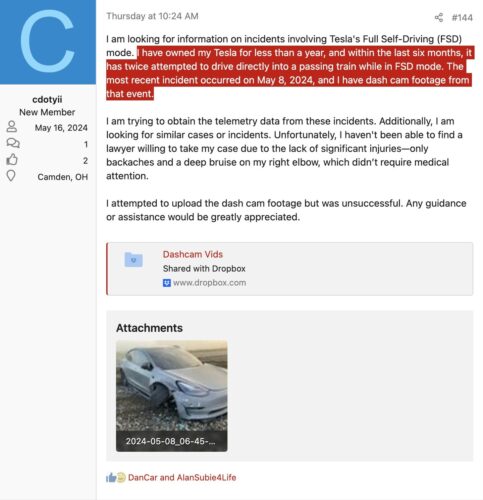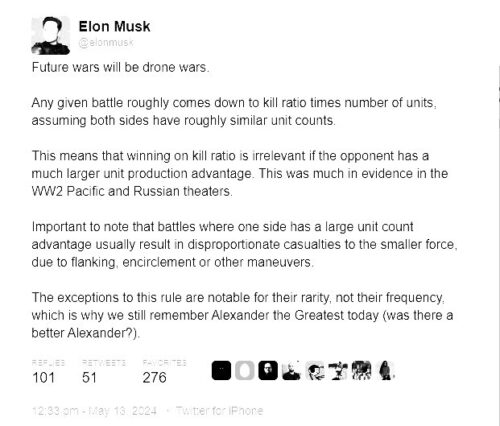In 2016 in my BSidesLV keynote presentation I argued Tesla Autopilot was an algorithm engineered to kill, choosing to do harm.
Few were ready to believe then what I said we could prove with simple tests of the vehicle.
Eight years later this seems to only get proven over and over again by people on public roads, let alone with controlled tests by the Dawn Project. Just the other day I wrote about the latest FSD crossing a double yellow on a blind curve almost crashing head-on into a police car.
So there should be no doubt anymore: FSD is a killer robot unsafe for any public areas.
Now look at the latest FSD complaint about it failing horribly.


A well soiled machine?
Some might say if we ever needed real world test video to prove radar and lidar must be mandatory for driving automation, this is it.
Every real engineer knows you can’t remove radar from a high speed road robot and expect it to not crash.
In 2021, we began our transition to Tesla Vision by removing radar from Model 3 and Model Y, followed by Model S and Model X in 2022. Today, in most regions around the globe, these vehicles now rely on Tesla Vision, our camera-based Autopilot system.
That 2021 management decision against engineering (redeploying its engineers to work at Twitter instead) was just one of the many reasons why Tesla crash so often, killing so many people. And notably they have abruptly reversed themselves, without admitting any fault for crashes let alone homicide.
Tesla bought over $2 million worth of lidar sensors from Luminar this year [in 2024] / Elon Musk previously dismissed the laser sensor as a ‘crutch’ and said that any company relying on lidar to power self-driving was ‘doomed.’
Tesla thus has intentionally and rapidly deployed robots to kill, by taking money from people who were falsely led to believe it would make them safe. Then it pretends it has zero responsibility for fraud causing tragic mass harms to society.
Why would they ever think dumping huge numbers of killer robots into cities would be profitable? Because that’s exactly what they think they must do, as if in some kind of war production mode.

To be clear, Enron Musk is absolutely wrong in this analysis. My graduate degree in history from LSE, mainly about the cold war, also focused on how 20,000 irregular Black soldiers in WWII were able to rapidly rout over 200,000 white supremacist fascist troops. Literally the opposite of what he’s saying is what historians should tell you, like how we could tell you fantasy about Nazis being “modern” and “advanced” was literal horseshit — 75% of the army depended on actual horses.
Historian protip: “Mars Technocracy” is the same concept as the infamous Aryan Nation, a white supremacist enclave on earth predicted to be here in 88 years. The difference is the technocracy of white supremacists is supposed to be created for them by a robot army.
And on that note, about denying reality, the latest huge Tesla court settlement was hush money to prevent a grieving family from revealing the truth about FSD being a killer robot, the kind of exposure that would protect other families.
It’s like a car company has been using speculative investor money since 2012 to hire low or no talent engineers to make bridges or buildings expected to fall down, aircraft expected to crash, and social media expected to spread hate and violence.
Worse than Enron, this is a clear and present danger with hundreds of fatalities so far, how much longer can such a fraud be allowed to operate?
